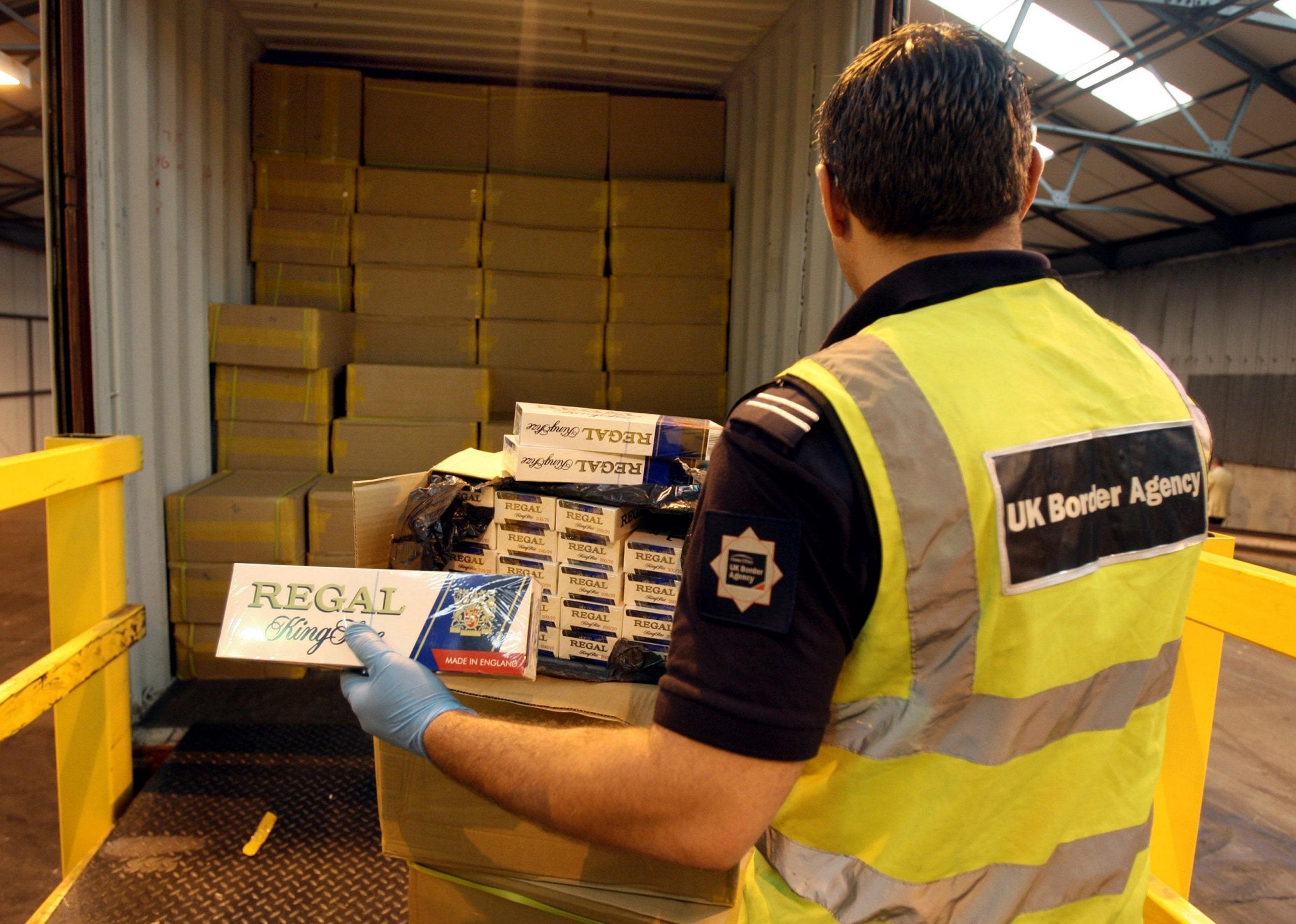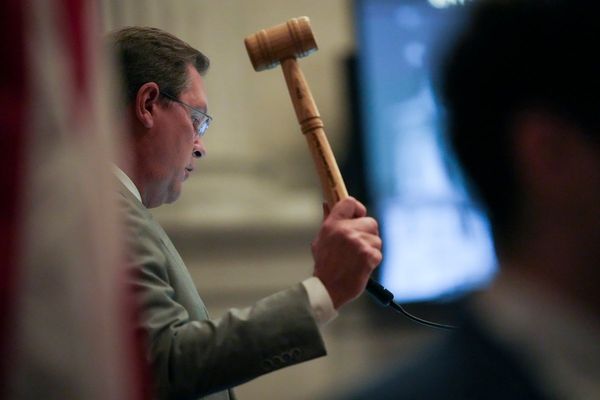
Michael (not his real name), a former police officer, is one of an anti-illicit trade team at one of the world’s leading tobacco companies – the so-called “big four” that make up the lion’s share of the global smoking industry. He’s long departed his former crime-fighting career but is now on a juicy beat: running a cat-and-mouse campaign with the growing numbers of cigarette smugglers to the UK and EU. “Cigarette smuggling is increasingly lucrative,” says Michael. “There’s a lot to gain.”
The smuggling, he says, takes place in a few different ways. “There’s the opportunist traveller who brings back cigarettes and tobacco bought cheaply on holiday. There’s the more organised ‘ant smuggler’, [an industry term] who regularly returns from cheap European holiday destinations with a suitcase full of cheap cigarettes. And there’s the organised criminal who works a supply chain.”
Michael, whose colleagues include a mix of ex-police and customs officers and analysts, is in the job for “brand protection” but is also engaged against these growing crime syndicates, which have been linked to terror groups, according to some, including the Centre d’Analyse du Terrorisme (CAT) in Paris.
Between them, the smugglers work with three kinds of illicit cigarettes: well known legal brands bought cheaply in places such as Belarus and Ukraine (where, for example, Marlboro costs about $1 (77p) a pack, as opposed to £11-£12 here, or Vietnam for the Australian market, where a legal pack of Marlboro costs about $25.10). The Vietnamese pack, at about 85p, shows the profit incentive.
Then there’s a dubious but growing tier of lesser smokes known in the trade as “cheap whites”, including brands such as Jin Ling: the smoker’s equivalent of Diamond White cider. These are currently the majority of illegal seizures and they’re made in the Jebel Ali Free Zone (aka Jafza) in the United Arab Emirates, where at least 25 cigarette producers legally manufacture cheap whites. Made for export, they still end up being smuggled to Europe via the Suez Canal and the Mediterranean, where they eventually end up under the counter in the less wholesome high street stores.

Another development is that fake cigarettes, says the 50-year-old ex-cop, are now being made in Europe rather than in the far east, which is why the big four – known collectively and sometimes disparagingly as “Big Tobacco” – are throwing a lot of heat at it.
“It’s happening because the margins are so big and the potential for easy profit so tempting,” says Michael. “And it’s widely understood that the black market has grown because of the constraints on the legal industry.” Moreover, he adds, the cheaper cigarettes are going straight to the UK’s most deprived communities – the market in which combustible smoking has its greatest hold.
A recently published report by KPMG covering the illicit market in the EU, Norway and Switzerland estimated that last year, the counterfeit and contraband (C&C) cigarette consumption was 8.7 per cent of total use in the EU. That’s 44.7 billion cigarettes. In the UK, meanwhile, C&C cigarette consumption increased from 14.3 per cent to 17.8 per cent between 2016 to 2017, the highest level since 2005 to 2006.
Worldwide, it is thought that 6 per cent to 8.5 per cent of the global cigarette trade is illegal. So, this autumn, the tobacco industry and health wonks are aiming to really smoke out the smugglers. On 25 September, a United Nations-backed treaty called the Protocol to Eliminate Illicit Trade in Tobacco Products enters into force – by July, 45 countries had already ratified it – and in October, it’s the eighth WHO Conference of the Parties (COP8) for the Framework Convention on Tobacco Control (FCTC), a biannual meeting that has set the agenda for smoking since 2005.

No doubt there will be talk of illicit trade, as this is becoming one of the biggest problems in a murky world. Just as official cigarette smoking rates decline across the world, partly due to the restrictions of tobacco use by price, taxation, advertising and ability to even find places to smoke, smuggling has taken hold. The WHO claims that if the global illicit trade was eliminated, governments would gain $31bn in revenue and 160,000 lives could be saved a year.
As Michael says, the European fakery market is surprisingly bold, particularly in Poland where 40 illegal producers were seized in 2017. This year alone, clandestine factories have been found in Preston, Birmingham, County Durham and elsewhere in the UK, while in March Ireland debuted with one in Louth where an eastern European team laboured away in a remote farmhouse on machinery hidden behind hay bales. Inside, the police raid found 25 million cigarettes destined for the UK.
So how do they make plausible cigarettes? “They often use machinery that has been either bought on Ebay or decommissioned by old tobacco manufacturers,” says Michael. “Some of it is half a century old but still turns out a proper looking ‘stick’ [the industry term for a cigarette]. And although the authorities bust them all the time they just crop up elsewhere.”

Sometimes, he says, they’re even staffed by redundant cigarette company workers, working in dusty warehouses, sheds and garages alongside technicians and shop floor workers from poorer territories such as Moldova, using ledger books, wages and accounts, and normally nimble enough to do a moonlight flit if they smell a rat. Once the fakers get the cigarettes to a shipping point, they’re disguised alongside legal freight such as furniture or inside (a recent development) hollowed-out white goods and tree trunks.
Most commonly, the smuggled cigarettes are secreted into lorries by bribing drivers. The Benelux countries are favoured for this part of the operation and in a process known to Michael and his colleagues as “window tapping”, the smugglers approach lorry drivers at laybys and service stations, and offer them a wad of about £1,000-£2,000 to take a pallet of fags to the UK. Assuming the driver gets through border checks they then contact the smuggler’s pals on a “burner” mobile phone, and receive directions where to pull over and give the cargo up and get paid off. With the deal complete, the cigarettes are then taken to the UK’s less salubrious stores and sold for about £4 or £5 – less than half the normal RRP – or via social media, a process which involves smoke, mirrors and creativity. “Facebook doesn’t allow the promotion of cigarettes,” says Michael. “To get around this they use code – such as, in one case, a cupcake with a cigarette brand written on it.”
Cigarette smuggling costs the taxpayer about £2.5bn a year, according to HMRC. But it also illustrates that smoking remains popular. Only last month, the Office for National Statistics’ Opinions and Lifestyle Survey (OPN) found that the UK’s rate of smoking had risen for the first time in six years, up from 16.1 per cent in 2016 to 16.8 per cent of the population.
Also, while it seems counterintuitive, cigarette smuggling may be linked to the long-term decline in smoking. Some attribute it to high prices and taxes, as well as new constraints on vaping (an activity which has plateaued in the past year according to Public Health England and the ONS). As Michael says: “The packaging ban [now one year old] has also driven the business underground – but in any case, soon after the ban the illegal factories were producing counterfeit cigarettes in plain packaging.” Clearly, millions of people still want to smoke but don’t want to pay £10-12 a pack, which traps the government in a curious double bind: it asks us not to smoke, but likes the tax take. Whenever a smuggler is caught, the immediate government message is that they have cost the UK valuable revenue that could have been put into, say, healthcare. In Australia the fake cigarette and smuggling factor has become so bad – a record 15 per cent of the market – that the government has set up a tobacco taskforce to “dismantle illicit tobacco supply chains”.
The tobacco war is stepping up. The Tobacco Retailers’ Alliance, which represents independent stores that sell tobacco in the UK, says that illicit tobacco has been found to contain pesticides, arsenic and rat poison – not to mention higher levels of nicotine – while a study from the Tobacco Control Research Group at the University of Bath claims that the tobacco industry is working to secure control of the global “track and trace” system that the United Nations wants in place to counter smuggling. Although big tobacco is accused of being complicit in the illegal trade, according to the European Anti-Fraud Office (OLAF), 90 per cent of illegal products seized are cheap whites from the UAE, providing a counter argument. Also, as the chief executive of health charity Action on Smoking and Health (Ash) Deborah Arnott says, there’s nothing new about cigarette smuggling: it’s just that the illicit market has a higher proportion of the total market. The “tax gap” of lost revenue has grown from £1.9bn in 2010-11 to £2.5bn today.
So Michael’s job is likely to be secure for a while. “It’s still quite under the radar,” he says. “But cigarette smuggling is up there with drug dealing.” As well as providing succour for the deprived, it’s also possible that cigarettes are getting the renegade allure of illegal drugs. Maybe, like in the era of prohibition, smoking a Marlboro will soon be something done at a speakeasy with a little entry flap.







